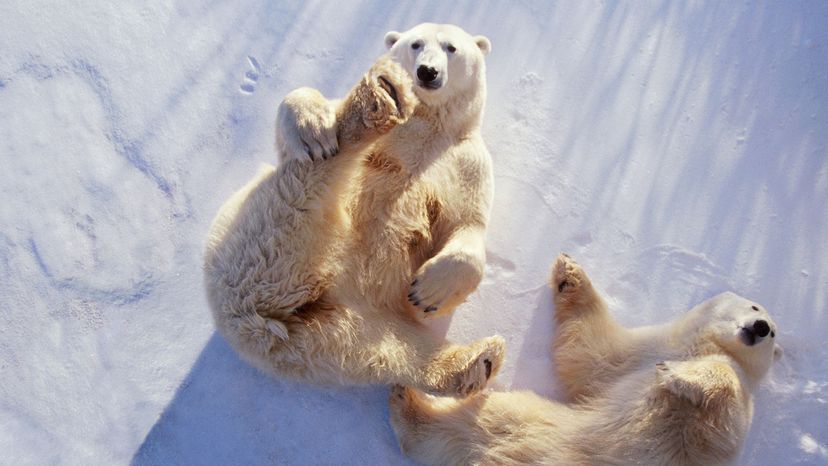Polar Bear Habitat: Life on the Ice

The polar bear, or Ursus maritimus (sea bear), probably evolved about 150,000 years ago from brown bears [source: Live Science]. A polar bear can actually mate successfully with a brown bear and the resulting offspring is fertile, which gives more evidence of a relationship between the two. There are a lot more brown bears out there than polar bears, though. Brown bears number more than 200,000 worldwide [source: WWF]. Polar bears only number about 23,000.
Polar bears live only in the Northern Hemisphere – you won't find them at the South Pole. The 23,000 live in 19 separate populations throughout the Arctic, in only five countries: the United States (Alaska), Canada, Russia, Greenland and Norway. About 60 percent of the population lives in Canada.
Advertisement
Life in the Arctic is harsh: The bears live in total darkness between October and February, and the temperature can drop as low as -50 F (-45 C) in winter [source: Polar Bears International]. And that's exactly how they like it.
Polar bears are built for extreme cold. They experience almost no heat loss: Two layers of fur and a blubber layer up to 4.5 inches (11.5 centimeters) thick keep them so well insulated, they'll overheat if they run. The areas that lack this insulation – ears, tail and muzzle – are especially small, minimizing non-insulated surface area.
Polar bears mostly walk slowly, following their favorite prey, the seal, from ice sheet to ice sheet. They need the ice to hunt. In warmer months, when ice sheets get smaller, the bears will walk hundreds of miles to find solid spreads of ice.
Polar bears can walk up to 20 miles (30 kilometers) per day, for several days in a row, relying on tiny bumps on the bottoms of their feet to keep them from slipping on the ice. They'll swim, too, both to cool off after a meal and to bridge the gap between ice sheets when they're following seals. Polar bears use their front paws to paddle and their hind legs to steer (imagine the most powerful doggie paddling ever). They'll go only slightly under the water when they swim, and their nostrils close up when they're submerged. As much as they thrive on the ice, they're strong swimmers. Polar bears have been tracked swimming up to 60 miles (100 kilometers) at a time, and at up to 6 miles per hour (10 kilometers per hour) [source: WWF].
Aside from their dependence on staggering cold, one of the biggest differences between polar bears and other bears is that polar bears don't hibernate. Females go into a sort of semi-hibernation toward end of their pregnancy, but they don't experience the drop in heart rate and body temperature that characterizes real hibernation. They mostly just rest and sleep a lot in the months immediately before and after they give birth.
However, births are declining. Of the 19 polar bear populations, at least five are known to be shrinking dramatically. In at least one area, the creatures are reproducing at just 20 percent of the rate they were two decades ago [source: NBC News].
This serious drop in population is due to climate change, and it has a lot to do with the way polar bears hunt.